Where the Past Begins Read online
Page 2
What editor would not be happy to be the enforcer of such a plan? What sane writer would not later realize that schedule to be ulcerating and impossible? [ed. note: Honestly, it didn’t seem that onerous to me.]
Even so, I did not miss a deadline, except one. The last. [ed. note: Technically, she was always a day late, using the excuse of PST, to protest her PTSD.] It was the Monday after the 2016 presidential election, and I felt lost, unable to focus. For the last piece, I chose the only subject that was relevant to me at the moment: the election and how my father would have voted. When I finished, I had both a book and an ulcer.
I wrote more than what is in this book. Free-form spontaneity had given rise to a potluck of topics and tone. Some were fun, like my relationship to wildlife and, in particular, a terrestrial pest from Queensland, Australia, a newly identified species of leech, Chtonobdella tanae, that bears my name. I also wrote a piece on the magnificent short story writer Mavis Gallant, our conversations over ten years of lunches and dinners in Paris, the last one spent in her apartment, where I read aloud to her for hours after a lunch of blinis and smoked salmon. I also considered using a few pages of cartoons—doodles drawn when I was bored at a conference—which I called “a graphic memoir of my self-esteem.” In the end, as the shape of the book emerged, Dan and I agreed on the ones I should keep. I had only one concern: what remains might give readers the misperception that I am cloistered in a lightless room with buckets of tearful reverie. There is reverie, but the room is surrounded by windows and is so bright I have to wear sunscreen when I write.
Since this is an unintended memoir, I thought it would be appropriate to include writings from my journals. I gleaned entries that reflect the spontaneity and seeming randomness of ideas that characterize how I think. They are also in keeping with the nature of the other pieces in this book. I call the longer, anecdotal entries from my journals “interludes.” I call the shorter entries “quirks.” They are quirky thoughts from the top of the head, or quirky things I have seen or heard, or quirky remnants of dreams. For writers, quirks are amulets to wonder over, and some have enough strangeness in them to become stories.
I added two other pieces that reflect fairy-tale qualities of the fiction I loved to read as a child. They are taken from the heartbreaking bin of abandoned novels. Both are prologues. The first, “The Breaker of Combs,” has become this book’s prologue. It captures the mythic past I grew up with and broke from before returning to it as a writer. The second, “Language: A Love Story,” takes flight from my earlier obsession with linguistics when I was a college student. I got as far as a doctoral program before I realized that academia had killed my excitement for linguistics and had instilled anxiety over how to distinguish myself from the other doctoral students. The linguistic principles cited in this rhapsody are likely out-of-date and incorrect. But I have kept it pretty much as I drafted it twenty-five years ago. I had a special interest in Manchu at the time, a near-extinct language with a wonderfully imagistic and onomatopoeic lexicon. It, too, carries the essence of myth, having once been the language of the Manchus that ruled China. The language was already headed to extinction before the Qing was overthrown in 1911. While revising this prologue for this memoir, I learned from an amateur genealogist that my DNA suggested the possibility of a Manchu ancestor. Of course it does. The Manchu of my book is also the Manchu of my past. Imagination is enough to make it so. You just have to look back. The title of this memoir, Where the Past Begins, comes from the last line of that story. Dan suggested it. I had not even remembered writing it.
Although I gave up on the idea of a whole book of e-mails between my editor and me, I realized their relevance to this book while writing a piece about my mother’s letters. In personal letters, my mother expressed herself differently. She began with events of the day and would then relate a particular situation, which led her to question what had actually happened. That eventually led to tangents, then a looping curlicue line of further thoughts, until she was galloping toward obsession. Only the end of a sheet of paper brought her written thoughts to a halt. I recognize that I do the same in my e-mails, except there is no limit imposed by a sheet of paper. I realized also that e-mails are different because they lend themselves to confession, philosophizing, profanity, and vulnerability. They are intimate because they are not words that would be said to many. They require trust and familiarity. In other words, these e-mails contain the attributes of memoir. Dan’s original suggestion [ed. note: She is referring to the imposed exercise, I believe.] gave birth to this book.
I am intermittently aghast that everything I have written will actually be an open book. I am contradictory in my need for privacy to write about what is private. That was why I had wavered over whether to include the e-mails. But when I told a number of writer friends what the original premise for this book had been, they all said they would have liked to read that book. Believe me, no one could have endured a whole book of them. [ed. note: I did.] But I have selected enough to show the beginning of a writer-editor relationship and the ensuing conversation over the book I was trying to write.
If you have ever wondered how messed up a writer’s drafts can be, you’ll find consolation or encouragement in reading “Letters to the Editor.” If you have ever wondered how writers and editors work together, these e-mails would not be the best example. I don’t think most writers would have dropped in on their new editor as often as I did to chitchat by e-mail about any old thing, including the loss of my mind that had once enabled me to write. Most editors would not have answered rambling e-mails with such diplomacy and kindness when the obvious answer to each e-mail should have been a firm suggestion that I cease using my fingers to tap out e-mails and apply them to finishing my much-delayed novel. He always made it seem like he would be happy to know more about what was on my mind.
For inspiration, patience, and guidance, I dedicate this book to my editor, Daniel Halpern.
PROLOGUE
* * *
THE BREAKER OF COMBS
My aunties once told me a story about the Breaker of Combs, an old woman who everyone shunned, except during the worst kind of tragedies. That’s when she was asked to break the comb of a ghost who was loved too much: a baby boy or a faithful husband, a scholar son, or a beautiful fiancée.
One family we knew called her when the wife hanged herself with the length of her own hair. Her daughter, who was to be married that year into a good family, discovered her mother’s body and cut her down. Then the family found them both, mother and daughter, one dead, one clinging, both with their eyes popped open. My aunties said long after the mother was buried, the girl wandered around the house with her tongue hanging out, gagging with grief.
When the Breaker of Combs arrived, she told the father to bring out the dead woman’s comb, the one the daughter had used to sweep through her mother’s hair every night. The old woman inspected the comb, a fine piece of golden jade, with many sharp teeth and the body of two phoenixes for a handle.
“As everyone knows,” began the old woman, “when a daughter combs her mother’s hair, she receives through its roots all her mother’s mistakes and sorrows.”
Then the old woman passed the comb over the girl’s head three times, and wiped it clean on a long white cloth. She tied the cloth into three large knots and commanded the girl with the hanging tongue to unravel them one by one.
When the first knot was undone, the Breaker of Combs cried, “We have loosened the girl’s connection to her mother’s past.” When the crying girl untied the second knot, the woman said, “We have let go of the mother’s connection to her daughter’s present.” When the third knot was undone, the Breaker of Combs announced, “Now the dead woman has no ties to this girl in this world or the next.” And as the girl began to wail loudly, the old woman laid the jade comb on the open cloth, picked up a stone hammer, and broke the comb into many pieces.
The girl instantly became quiet, all her grief shattered forever, just like that. Her
grateful family sent the old woman away with one gold ingot and several extra coins, begging her never to speak of this tragedy again.
That was all my aunties told me, but that’s not the end of the story. I heard what really happened. That young girl took the jagged pieces of the comb and cut off her own long hair, short as a boy’s. Then she ran away, joined the Communists, and never combed her hair again.
CHAPTER ONE
* * *
A LEAKY IMAGINATION
From an early age, I believed I had an extra amount of imagination. I did not come up with that assessment on my own. Many people had told me that. They said I had artistic imagination because I could draw a cat that looked like a cat and a horse that looked like a horse. They praised me for drawing a house with a door that was proportional to the people who stood next to it. They admired the tree next to the house, its thick trunk and smaller branches populated with tiny green leaves. They thought I was creative for putting a bird in the tree. People stared at my drawings, shook their heads, and said I had a wonderful imagination.
At first I wondered why others could not do what came naturally to me. All you had to do was draw what was there in front of your eyes, be it a real cat or a cat in a photo, and after you had drawn it a number of times, it was easy to draw it from memory. I was so good at drawing that by age twelve I was asked by my piano teacher to give his eight-year-old daughter drawing lessons in exchange for my piano lessons. I probably gave the girl instructions like these: The eyes should be drawn in the middle, between the nose, and not on the forehead the way you have it. Just draw it the way it is.
Fufu, drawn by me at age twelve.
I later learned that a good eye is not the same as a good imagination. My high school art teacher, an artist himself, wrote that conclusion on my final semester report card: “Has admirable drawing abilities but lacks imagination or drive, which are necessary to a deeper creative level.” The comment was sharply wounding at the time. He did not say I needed to use more of my imagination. He simply said I lacked it—that and depth.
After my last year in high school, I did nothing further with my artistic inclinations, save the occasional sketch and doodle. I do know that had I continued, I would not have gone in the direction of abstract art. Even today, I am often puzzled by abstract art—those ten-foot-high paintings with a minimal dot of color or squiggles. At museums, my husband and I turn to each other and jokingly utter the words of cultural philistines: “And they call that art!” I now remember there were several afternoons in class when my art teacher instructed us to create a drawing using only colored shapes. Whatever I did, that was likely what sealed his opinion that I had no imagination or depth, at least not for the complexities of abstract art, which I now recall was the kind of art he made.
I recently took up drawing again when I joined a monthly nature journaling class, which has as much of an emphasis on journaling as plein air sketching. I began by drawing birds. Once again, I heard the same compliments from friends and family: that I have a good eye. I can draw a bird that looks like a bird. This time, however, I recognized that my abilities stop there. I can draw a likeness, but I can’t easily create backgrounds more complicated than a branch with a few leaves. I can’t add a new context—falling buildings or a melting ice cap—or anything else that would enable the figurative drawing to represent an idea, say, global warming through the iris of a raven. As it turned out, everyone in the class had a good eye and a number of them were especially skilled and also imaginative. Our teacher, a naturalist artist and author, told us anyone can learn to draw, a view I’ve heard expressed by numerous artists since then. You can acquire techniques—like how to block out the shape of your subject, to use the negative space around a figure to see its shape, to use shading to represent the anatomical structure of birds, amphibians, and large mammals. You can play with a mix of watercolors, gouache, and graphite. You can get by perfectly well with just a pencil and journal book, or you can feed your artistic needs by draining your savings account buying mechanical pencils, blending tools, gel pens, a set of twelve soft and hard graphite pencils, a good brand of watercolor pencils, then an even better brand of watercolor pencils, an embossing tool, watercolor brushes, watercolor brushes with built-in reservoirs, sketchbooks and then really good sketchbooks, zoom and macro binoculars, a spotting scope, a field research bag for carrying your sketch kit, plus a portable stool for sitting in the field for hours. You have to practice daily to make certain skills intuitive—for instance, foreshortening and shadows related to the direction of the light. You need the right shape of the whole creature before you draw an eye. I can’t help it, though—I like to draw the eye early on and correct it later. I like that the bird is eyeing me suspiciously as I draw it.
Now that I’ve been drawing every day, I have come to realize the larger reason I was not destined to be an artist. It has to do with what does not happen when I draw. I’ve never experienced a sudden shivery spine-to-brain revelation that what I have drawn is a record of who I am. I don’t mix watercolor paints and think about my changing amalgam of beliefs, confusion, and fears. I don’t do shading with thoughts about death and its growing shadow as the predicted number of actuarial years left to me grows smaller. When I view a bird from an angle instead of in profile, I don’t think of the mistaken views I have held. With practice, I will become better at drawing the eye of a bird or its feet, but I can’t practice having an unexpected reckoning of my soul. All that I have mentioned—what does not happen when I draw—does occur when I write. They occurred in the earliest short stories I wrote when I was thirty-three. Then, as now, they are revelations—ones that are painful, exhilarating, transformative, and lasting in their effects. In my writing, I recognize myself.
Drawing will continue to grow as a pleasurable activity. I enjoy the practice and patience it requires. I love the sensuous feel of graphite sliding across paper. I was excited by my discovery two days ago that watercolors are not flat swashes of pigment; they create mottling, shading, and other interesting effects that suggest texture and depth. I am delighted by the final outcome. Is it a good likeness? Does it show signs of life? I was humored by my childish pride when someone on Facebook made a comment on my first watercolor of a coot, a bird with a white bill and black body: “You did a good job of capturing its essence.” She knew it was a coot.
I have also found ways in which nature journaling is very much like fiction writing. It requires me to be curious, observant, and inquisitive. I have to continuously wonder over what I am seeing and remove the usual assumptions. Wonderment has always been my habit, even before I knew I was a writer. It still is today. When I was on Robben Island in South Africa, for example, I noticed four orange-eyed oystercatchers on the shore, evenly spaced and perfectly aligned. They simultaneously dipped their beaks into the sand, looked at us, then dipped again—all with the precision of an avian troupe of Radio City Rockettes. What was going on? I mused over the possibilities, some of them rather far-fetched—that this was similar to the instinct that “birds of a feather flock together,” and by acting as a regiment with identical movements, they can be attentive to important incongruities in their environment, say, an osprey, or a bunch of gawking tourists with cameras clicking. Or perhaps it was a parasite or virus that caused some sort of zombie bird syndrome, similar to the zombie ants I saw in Papua whose brains sprouted a foaming parasitic fungus, which directed the ants to attach themselves to an ideally located leaf on the forest floor until the brain bursts forth with spores that would create a new generation of zombie ant masters. The next time I see this synchronized behavior, I will wonder again and come up with more guesses. When I do nature sketching, I am trying to represent what I see, what is true to a particular species of bird and its behavior. My observations and questions have to do with what might be factually true, which I could discover only by asking an ornithologist. But in writing fiction, the truth I seek is not a factual or scientific truth. It has to do with human nature, whi
ch is tied to my nature. It is about those things that are not apparent on the surface. When I set out to write a story, I am feeling my way through a question, often a moral one, and attempting to find a way to capture all its facets and conundrums. I don’t want an absolute answer. When writing fiction, I am trying to put down what feels true. Even though the story may not ostensibly be mine, it contains knowledge based on my personal history. It is my experiences that have coalesced into a situation that holds sad irony or horrific clarity. I want to bring forth what I cannot see, what is not there, or is there but nearly indiscernible because the million pieces that make up its whole are scattered all over the place, and extend from past into present. While writing I allow my brain to circumnavigate all the possibilities, but I am not confined to one conclusion. No truth is permanent. Irony is not an intractable fact. Imagination is fluid in flowing to any alluvial ditch of emotions, personal idiosyncrasies, or memories that appear when the flood subsides.

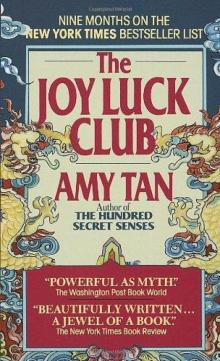 The Joy Luck Club
The Joy Luck Club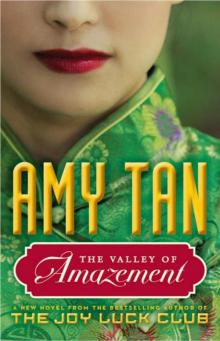 The Valley of Amazement
The Valley of Amazement The Bonesetter's Daughter
The Bonesetter's Daughter Saving Fish From Drowning
Saving Fish From Drowning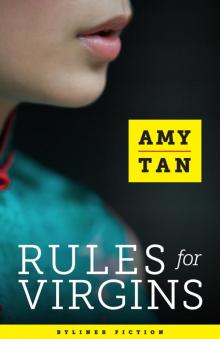 Rules for Virgins
Rules for Virgins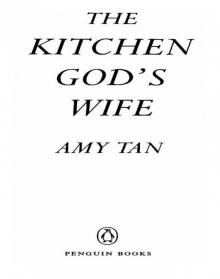 The Kitchen God's Wife
The Kitchen God's Wife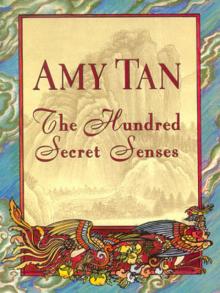 The Hundred Secret Senses
The Hundred Secret Senses The Opposite of Fate: Memories of a Writing Life
The Opposite of Fate: Memories of a Writing Life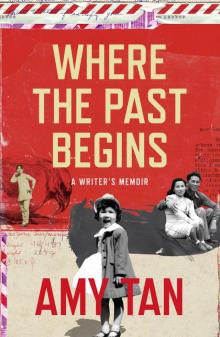 Where the Past Begins
Where the Past Begins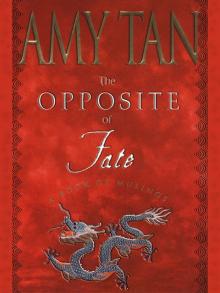 The Opposite of Fate
The Opposite of Fate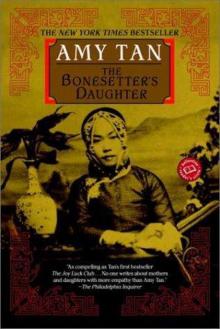 (2001) The Bonesetter's Daughter
(2001) The Bonesetter's Daughter